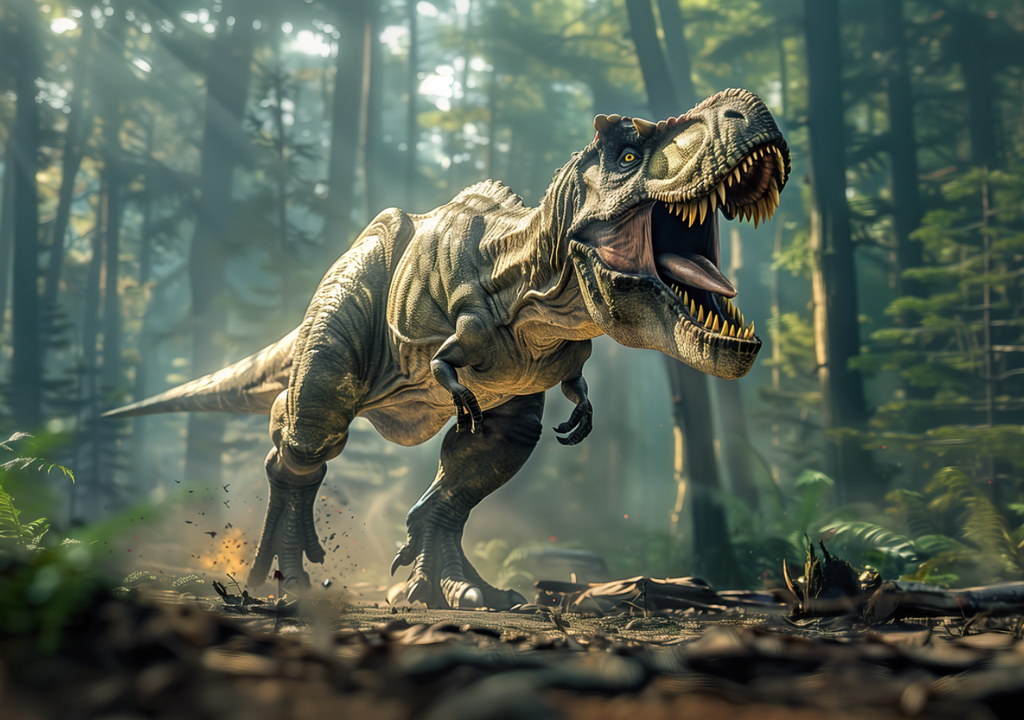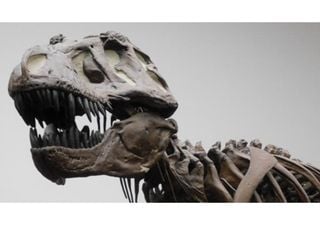How big could dinosaurs like T.rex actually get?
A new study suggests that dinosaurs could have been 70% heavier than fossil evidence suggests. Computer modelling was used to estimate the potential length and weight of T.rex, with the potential to use the model on all dinosaur species.

A new study published in the journal Ecology and Evolution, discusses the possible maximum size of dinosaurs, using the iconic Tyrannosaurus rex as an example. Dr. Jordan Mallon from the Canadian Museum of Nature and Dr. David Hone from the Queen Mary University of London used computer modelling to estimate that T.rex could have been 70% heavier than fossil evidence suggests.
The huge sizes of dinosaurs are one of the main reasons people are so fascinated by these ancient creatures, but the question of how they got to be so big still hasn’t been truly answered. Most dinosaurs are known from only one specimen or a handful of specimens, so it is unlikely we have a true understanding of their size ranges, including how big the biggest individuals of a species were.
How big were the largest individuals?
To address the question of how big were the largest individuals, Mallon and Hone used computer modelling to analyse a selected population of T.rex specimens. They factored in variables such as growth rate, life span, population sizes, how incomplete the fossil record is, and more.
T.rex was selected for this study because it is a very well-studied dinosaur where many of the variables have already been well estimated. Body size variances within adult dinosaurs, which is still poorly known for T.rex, were modelled with and without sex differences, which are based on modern, living alligators. Alligators were chosen due to their large size and closeness to dinosaurs.
Results showed the researchers that the largest known T.rex fossils fell into the 99th percentile, meaning they represent the top 1% of body size. The computer models also suggest that the largest specimen that could have lived could have been 70% larger than the current biggest known T.rex (an estimate of 15 tonnes vs 8.8 tonnes) and 25% longer (estimated 15 metres vs 12 metres).
Mallon said: “Our study suggests that, for big fossil animals like T. rex, we have no idea from the fossil record about the absolute sizes they might have reached. It’s fun to think about a 15-tonne T. rex, but the implications are also interesting from a biomechanical or ecological perspective."
The values are estimated based on the computer model, but the discoveries of giant modern species specimens mean that there must have been larger dinosaurs that have not been found yet. “Some isolated bones and pieces certainly hint at still larger individuals than for which we currently have skeletons,” said Hone.
Gaps in the fossil record
The study adds a new viewpoint to the debate about the largest fossil animals, as many of the largest dinosaurs are known from a single specimen. A large species could be based on a single large individual, and a small species could be based on a single tiny individual, which does not reflect the average size of the species.
Hone said: “It’s important to stress that this isn’t really about T. rex, which is the basis of our study, but this issue would apply to all dinosaurs and lots of other fossil species. Arguing about ‘which is the biggest?’ based on a handful of skeletons really isn’t very meaningful.”
Source of the news:
Mallon, J.C. and David (2024). Estimation of maximum body size in fossil species: A case study using Tyrannosaurus rex. Ecology and Evolution, 14(7).








